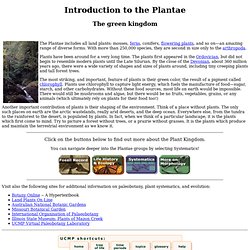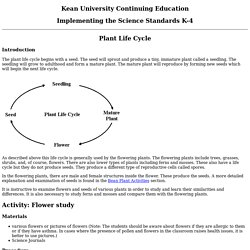

Biology of Plants: Plant Adaptations. British Ecological Society. Secretary: Franciska De Vries A new BES Special Interest Group on plant-soil interactions, with a focus on biogeochemical cycling, community dynamics, and ecosystem functioning.

Aims: – To promote research on plant-soil interactions and their role in ecosystems through workshops, symposia, and events at BES meetings – To provide opportunities for networking and collaboration among researchers involved in the study of plant-soil interactions and ecosystem ecology – To serve as a platform to discuss and share techniques, expertise, and data – To promote research across scientific disciplines to students, facilitate training opportunities in different techniques, and provide support for early-career researchers Background: The study of plant-soil interactions is a rapidly growing area in terrestrial ecology.
Current / Future Meetings 18 – 20 May 2015Sequencing metaanalysis workshopLocation: The University of Manchester Confirmed speakers/leaders of the workshop are: Book now, places are limited! A Student's Guide to Global Climate Change. Most plants and animals live in areas with very specific climate conditions, such as temperature and rainfall patterns, that enable them to thrive.

Any change in the climate of an area can affect the plants and animals living there, as well as the makeup of the entire ecosystem. Some species are already responding to a warmer climate by moving to cooler locations. For example, some North American animals and plants are moving farther north or to higher elevations to find suitable places to live.
Climate change also alters the life cycles of plants and animals. For example, as temperatures get warmer, many plants are starting to grow and bloom earlier in the spring and survive longer into the fall. Disappearing Habitats As the Earth gets warmer, plants and animals that need to live in cold places, like on mountaintops or in the Arctic, might not have a suitable place to live. What can people do about it? Coral Reefs What can people do about it? Learn more. Introduction to the Plantae. The Plantae includes all land plants: mosses, ferns, conifers, flowering plants, and so on—an amazing range of diverse forms.

With more than 250,000 species, they are second in size only to the arthropoda. Plants have been around for a very long time. The plants first appeared in the Ordovician, but did not begin to resemble modern plants until the Late Silurian. By the close of the Devonian, about 360 million years ago, there were a wide variety of shapes and sizes of plants around, including tiny creeping plants and tall forest trees. The most striking, and important, feature of plants is their green color, the result of a pigment called chlorophyll.
Another important contribution of plants is their shaping of the environment. Click on the buttons below to find out more about the Plant Kingdom. You can navigate deeper into the Plantae groups by selecting Systematics! Visit also the following sites for additional information on paleobotany, plant systematics, and evolution: Wisconsin Fast Plants® Program. Plant Life Cycle. Kean University Continuing Education Implementing the Science Standards K-4 Plant Life Cycle Introduction The plant life cycle begins with a seed.

The seed will sprout and produce a tiny, immature plant called a seedling. As described above this life cycle is generally used by the flowering plants. In the flowering plants, there are male and female structures inside the flower. It is instructive to examine flowers and seeds of various plants in order to study and learn their similarities and differences. Activity: Flower study Materials various flowers or pictures of flowers (Note: The students should be aware about flowers if they are allergic to them or if they have asthma. Procedure 1. 2. They learn the different parts by completing a definition table as suggested below. 3. Some flowers have sepals and petals that look the same. 4. Results 1. 2. Discussion 1. Mosses are generally very small, usually between 10 and 20 mm in height.